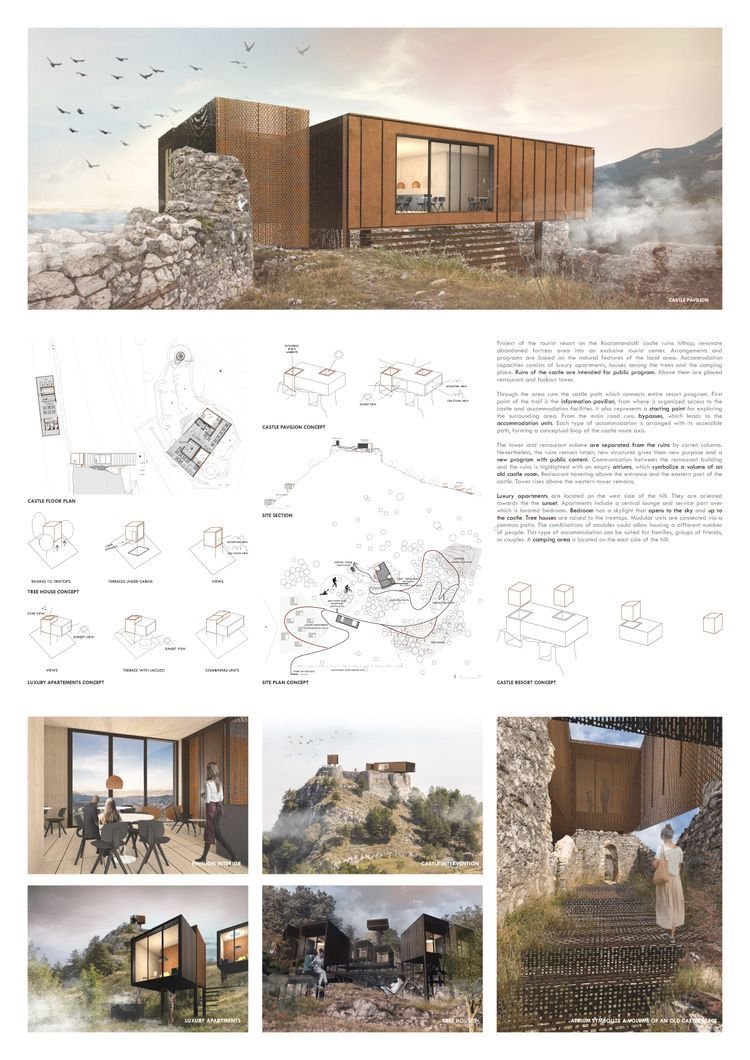Tips on How to Create a JOB-WINNING Architecture Portfolio.
Important things to know about creating an Architecture Portfolio
i. Purpose of the Portfolio
Creating a captivating architecture portfolio is essential for budding professionals. It serves as a visual CV, showcasing design skills, technical capabilities and graphic expertise. An impressive and cohesive architecture portfolio can make all the difference in landing your dream job.
ii. Who and What Is It For?
Identify your audience and tailor your portfolio based on who it is for. Carefully curate its content based on the target audience. The graphic style, length and presentation layout should also be on whether it's for potential employers, clients, or academic purposes.
iii. Different Uses of the Architecture Portfolio
This article will show you how to create an architecture portfolio for job applications and interviews. However, architecture portfolios can serve multiple purposes, such as university submissions, winning projects, presenting to clients, or even applying for postgrad architecture courses.
Architecture Portfolio Tips 👇
1. Check Out Architecture Portfolio Examples for Inspiration
Exploring example architecture portfolios is a great source of inspiration. They provide valuable insight into layout, content organisation, and overall aesthetic. You should analyse what makes a successful portfolio and implement these qualities into your architecture portfolio to make it stand out. Follow our Pinterest for great architecture portfolio inspiration.
2. Choose an Architecture Portfolio Template
Choosing or creating a template should complement your architecture and effectively highlight your projects. Consider the layout flow and ease of navigation. A clean, visually appealing and intuitive template will enhance the overall impact of your portfolio.
3. Utilise Graphic Design Skills
Your architecture portfolio isn’t just a collection of projects; it's a demonstration of your graphic design skills. Pay attention to typography, image and text placement, and colour scheme. The graphic finishing touches such as icons can create a polished and professional look.
4. Create Sample Architecture Projects
Include architectural projects that showcase your diverse architectural design skills, such as different architectural styles, graphic styles, and different architectural mediums such as physical models, hand drawings, sketching and renders.
5. Highlight Your Skills – employable qualities
It is important to emphasise your employable qualities such as; problem-solving, project management, and any unique skills that set you apart. Articulate your roles, contributions and responsibilities to each project.
6. Selecting Content
Thoughtfully curate your architecture portfolio to showcase a diverse range of projects that highlight your skill. Be quite ruthless when selecting what work to include its quality over quantity!
7. Hierarchy and Structure
To guide the viewer through your work create a clear hierarchy. Do this by organising your portfolio strategically, categorising your work based on relevance or chronologically and space out the heavy hitters.
8. Information and Text
Descriptions should complement visuals so keep the text concise...
9. Layout and Design
Maintaining a consistent layout style is an important quality for an architecture portfolio as it creates structure and flow, emphasising visual appeal. Having the skills to use white space effectively is an advanced skill that can be used in many different documents.
10. Order and Neatness
Arrange projects logically. Your architecture portfolio must be clean and arranged logically, No pesky hairs, neatness reflects attention to detail.
11. Proofread and QA Images
Check for typos and grammatical errors by proofreading several times, it also helps to have a third party proofread too. Typos can reflect poorly on you when applying for jobs. Verify image quality and resolution for crisp representation.
12. Length of Portfolio
Your portfolio needs to be comprehensive yet concise, particularly a portfolio for a job application needs to be fairly snappy.
13. Your Personality
Let your personality shine through your portfolio as individuality and personality are important qualities to an employer.
14. Presenting Your Portfolio
Present your portfolio confidently by practising. Be prepared to discuss your design choices and answer interview questions.
Conclusion
Crafting a job-winning architecture portfolio requires a strategic presentation blending creativity and skill.
By curating a compelling architecture portfolio you will engage your employer and create a lasting impression. Your portfolio will not only demonstrate your architectural skills but also your design, graphic and presentation skills. As well as highlight your work ethic and personality.
FAQs relating to How to Create a JOB-WINNING Architecture Portfolio.
Is a digital portfolio better than a physical one?
Choose based on your audience and convenience of presentation. Having a digital and digital copy of your portfolio is best practice.
How many projects should I include in my portfolio?
Aim for quality over quantity; your portfolio should be concise including enough to showcase your versatility and skills.
Should I include personal projects in my portfolio?
Personal projects are good for polishing skills. Therefore yes, if they demonstrate your creativity and skills relevant to the job application.
How important is the layout and design of the portfolio?
A well-designed portfolio enhances employability as it demonstrates layout and design skills to potential employers.
Can I tailor my portfolio for different job applications?
Absolutely! Customising your portfolio to align with specific job requirements shows you have researched employers and have attention to detail.









